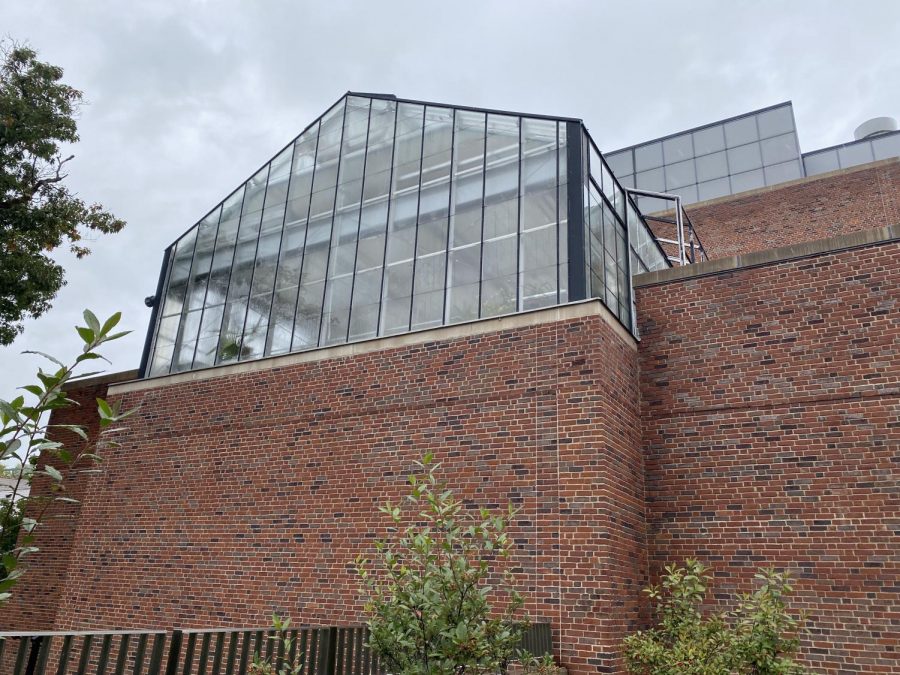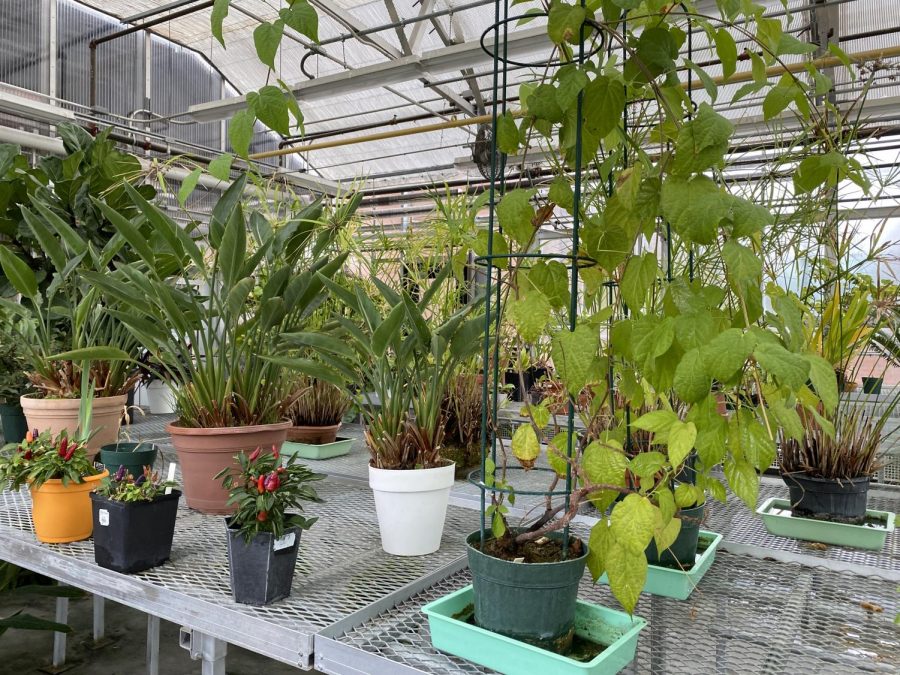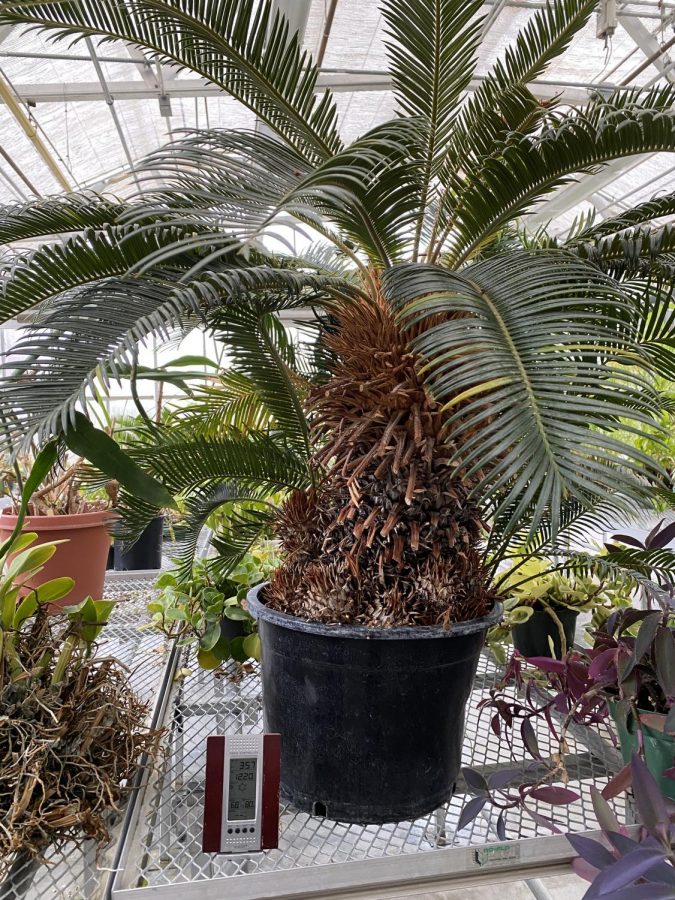Behind the scenes of Morley Science Labs’ ‘secret’ greenhouse
October 6, 2021

Science Quad is a maze of hallways, labs, staircases, and classrooms. It’s easy to lose yourself in the twists and turns while wandering into Wachenheim or attending office hours in the Thompson Chemistry Labs. Perhaps this convoluted labyrinth is one of the reasons that the greenhouse nestled three floors above the ground at the back of the Morley Science Labs is virtually unknown to students.
“Well, I didn’t really hear about the greenhouse,” Katie Brockmeyer ’24 said. “I was standing in the garden in [the] South Science area, and I looked up and went, ‘Oh my goodness, we have a greenhouse!’ And then it became my mission over the summer to find a way into it… It failed miserably.”
The mission was doomed to fail from the start because the greenhouse is not open to the public, including College students. “The integrity of the space has to be maintained for the protection of the research plants/projects and course work,” Debra Rogers-Gillig, a technical assistant at Morley and a caretaker for the greenhouse, wrote in an email to the Record.
Despite the greenhouse’s elusivity, I was lucky enough to be granted a tour of the space. On a cold, rainy day, I trooped my way over to the Science Quad. After being led through a storage area and a plant-mixing station, I found myself entering the colorful greenhouse, the warm humidity and earthy scent embracing me.

Plants are not the only feature of the greenhouse. A complex ventilation system maintains the tropical temperatures many of the plants require. “The current greenhouse is automated for cooling and air circulation,” Rogers-Gillig said. “There are three levels of vents that are programmed to open and close as per temperature readings, as well as ceiling fans.”
The system can also be programmed for each season; for Rogers-Gillig, this was a welcome change from the original greenhouse, which used to be strictly manual. Built in 1978, the original greenhouse was located on the third floor of Thompson Biology Lab before it was dismantled and relocated to Mt. Greylock Regional High School. The current greenhouse was built in 2001 to serve as a larger, more automated facility, according to Rogers-Gillig.
Even with a new building, however, Rogers-Gillig said upkeep of the greenhouse and its plants can be difficult. “Maintenance of any living material has its challenges,” she said. “The plants need regular watering and feedings, plus some research plantings have specific protocols that need to be maintained… The main issue with our greenhouse is that it is one large room — this limits what kind of plants we house, and where they can be placed.”
For faculty or students who are researching plants that require certain environments that the main greenhouse cannot accommodate, alternatives are available. “There are growth chambers available for profs to use for their research — these are light and humidity regulated according to the needs of the plants and/or research protocols,” Rogers-Gillig said.

Housed within the greenhouse are the plant collections of two plant-based classes, BIOL 220: Field Botany and Plant Natural History, taught by Professor of Biology Joan Edwards, and BIOL 308: Integrative Plant Biology: Fundamentals and New Frontiers, taught by Professor of Biology Claire Ting. Students are often able to view the plants in person, a practice that stopped in spring 2020 due to the pandemic.
“That was just devastating because the whole class works on the premise of going outside and seeing the plants or growing plants in the greenhouse,” Edwards said. “And all of a sudden, everyone was scattered hither and yon. So I did projects for them where they could work at home. But it wasn’t the same.”
Despite the disappointment about being unable to work with the plants from the greenhouse, the College’s local ecosystem still provides many opportunities to investigate wild flora. Brockmeyer, who would be unable to take Edwards class in spring due to scheduling conflicts, has developed a growing interest in foraging. “I’ve been doing a lot of learning about foraging with Sonya [Dutton ’24], like learning about all the fun poppy plants that you can touch around campus, or how to make rosehip syrup, or foraging stuff that they grow in the Parsons Gardens that are all student-run.”
Though the greenhouse may not be accessible to all students, Edwards believes that there will and should always be interest in the plant world. “It seems like a narrow focus, but in fact — why is our atmosphere the way it is?” Edwards said. “It’s because of plants. Why do we have the foods we have? It’s because of plants. So our whole being and well-being depends on plants… Ultimately, everybody should know about plants.”








